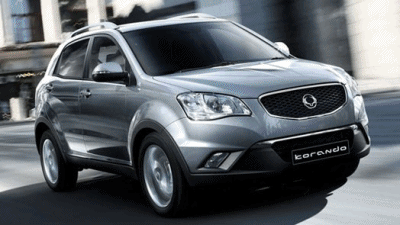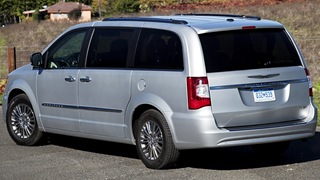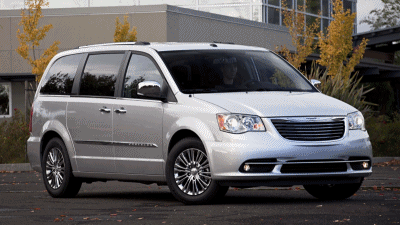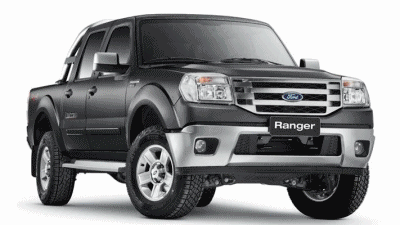Wallpaper Evolution of PLAAF doctrine/training
This is the part 4 in the series of reviewing the content of the recent book that I read. I will be looking at the evolution of PLAAF training and doctrine. This is one area that is hard to write about, because we simply don't have many English based sources and the Chinese sources often seem like propaganda pieces. The recent book by CMSI really did a good job on this topic and I hope that this piece will provide even more for PLAAF watchers.In October of 1949, USSR sent 878 experts to China to build a flight academy and supply 434 training aircraft. Eventually, 6 fighter academy and 2 bomber academies were built. Due to Korean War, they rushed 350 pilots through the first academy in one year and did not even train in night combat or complex weather conditions. By May 1951, PLAAF had 17 aircraft divisions and 34 regiments. They served mostly in secondary role to Soviet Air Force in confrontation against USAF. As USSR was withdrawing from its former base in Lushun to return to China, it provided valuable training to 105 PLAAF pilots from 1954 to 1955. Soviet instructors provided PLAAF pilots with night training, advanced combat maneuvers and training in adverse weather conditions. In a defensive cooperation agreement signed in 1957, USSR agreed to increase cooperation in aerospace tactics training and theater level exercises. By that year, PLAAF had developed its first flight training manual based on the Soviet training manual plus experiences from Korean war and past training. From this point until 1964, PLAAF pilots regularly had about 122 hours of training a year, which matches Warsaw Pact standard. Even though PLAAF can see the importance of training, the ideological types in PRC leadership thought it was capitalistic to train. PLA has historically adopted a "people army" motto that relies on the large Chinese population and land mass and the ideological types wanted PLA to go back to that and to spend more time on communism ideology. Once the Cultural Revolution started, the ideological types won out in PLAAF's development. By 1966, PLAAF pilots were averaging less than 24 hours of training a year. From 1968 to 1971, they only averaged 37 hours 16 min a year. Most J-6 pilots in charge of night missions had never fired out of aircraft gun let alone launched an AAM. Due to high accident rate from low training hours, the training program became more and more simple. Even the pilot selection program for PLAAF changed from selection based on performance to based on their obedience of Mao's communist ideologies. Mao even gave orders to compress flight school program from 2 years and 4 months to 1 year. Much of the flight training and aircraft related manuals were destroyed as part of the Cultural Revolution, because that's what happened to anything book or cultural related at that period. A a result of thse changes, new pilots had to return to flight school starting from 1973, because they couldn't handle the PLAAF training. Only 6.2% of PLAAF could operate at night time and only 1% could operate during adverse weather conditions during night time.
The training programs and flight school recovered after Cultural Revolution and was back to normal by 1983. However, PLAAF doctrine, tactics and training did not change from 1964 to 1983. Even in early 90s, a visiting Russian Air Marshall commented that PLAAF doctrine and training had not changed much since the Korean War. Although PLAAF was a separate air force on paper, but it was just a tactical support for the army. Organizationally, PLAAF's military regions are the same as that of the army, because they were originally formed to support the army through air denial and CAS missions. PLAAF did not contain any kind organizational structure like long range aviation or Frontal aviation of VVS to carry out strategic tasks or offensive tasks independent of the army. In all of PLA's conflict since its formation, PLAAF has never attacked or defended on its own. The most number of sorties it had per day was only a few hundreds and done mostly during daytime. In the conflict against Vietnam in 1979, PLAAF never even provided CAP for its ground troops. This ground supportive mentality was not just a function of equipment limitations, but also part of the general doctrine/mindset within PLA.
Back in 1992, PLAAF was stuck with 1950s era training procedure of spending 160 hours on basic trainer before switching to jet trainer compared to 60 hours for Soviet AF. China still did not have even one AF training research book. When they first received Su-27s from Russia, PLAAF had many problems using this new aircraft even though the first converts had over 1000 hours of flight experience on J-6/7s. Russian flight instructor found that PLAAF was treating Su-27 like Mig-21 and were not utilizing all of the potential of Su-27. During 3rd division's training in Russia, they were found to be overly nervous in flight training and afraid of crashing their planes. PLAAF faced a dilemma of developing training that strikes balance between maintaining safety while increasing difficulty level. At the same time, PLAAF also did not have modern tactics to utilize Su-27. This was shown in exercises involving J-7 and Su-27, where a J-7E squadron was able to penetrate Su-27 defense on over 90% of confrontations. In the cat & mouse game between ROCAF and PLAAF, Su-27s faced strong EM pressure from Taiwanese ground based and aerial based ECM equipments. In fact, Taiwanese EW was able to cut off communication between PLAAF aircraft and ground base. ROCAF reconnaissance aircraft, ECM aircraft posed great risk to the UHF radio communication system of Su-27. Even with relatively weaker radiation, ROCAF fighter jets can seriously disrupt PLA communication when its comes within short distance of PLA units. Clearly, PLAAF needed to learn to operate 4th generation aircraft with new tactics under heavy EM pressure.
On top of the backwardness in doctrine and training, PLAAF also proved to be woefully inadequate in large scale exercises. In 1996 Taiwan exercises, PLAAF could not find a ground command that can direct different aircraft types, because PLAAF rarely had integrated training at that point. In most cases, a PLAAF command post can direct at most 12 aircraft n the air space around airport. When AF and naval aviation have exercises, AF controller is only in charge with giving instructions to AF and does not even know the movement or the goal of the navy. PLAAF was simply not capable of having large scale or joint operations prior to this decade.
Even with USAF's overwhelming display of power in the Operation Desert Storm and Kosovo, some members of PLA brass still did not understand the importance of a modern air force. When PLAAF was first showing off Su-27s to PLA brass, they were not showcasing its maneuverability or its ability to conduct BVR strikes. Rather, they were using Su-27s to launch rockets and dumb bombs. The Russians and most oversea China watchers have often wondered why Su-27s were used in this manner in PLAAF exercise when it was not designed for ground strikes (until later upgrades). It seemed that PLAAF impressed the heads of PLA with by the sheer large payload of Su-27s and its capability to destroy ground targets. Previous PLAAF aircraft like J-7/8 and Q-5 simply did not have the capacity to carry this much ground ammunition. I think that's also why PLAAF bought Su-30MKK. They wanted a platform that could show PLA that the air force could be used to launch large quantity precision strikes on targets far away from its base. I think Su-27/30 was used to transform the mindset of PLA so that PLAAF can become a more independent force that can conduct offensive operations by itself. Flankers were chosen over Fulcrum series because fulcrum did not have the payload and range to transform the role of PLAAF in PLA.
As early as 1987, PLA Daily had an article about a new flight center in Northern China that simulated an invading force. That flight test center is the FTTC base at CangZhou. It currently has three aggressor regiments (J-10, Su-30MKK and J-7E). They are tasked with developing combat tactics, flight techniques, training programs for new aircraft and conducting certification of new equipments. They are also tasked with defending Beijing. After the establishment of FTTC, the best pilots were sent here to conduct flight testing of new aircraft and equipments, while developing new techniques and tactics. In the 90s, FTTC spent more time on tactics training than trying out new flying techniques due to its lack of experience in modern tactics. Starting from 1988, FTTC received Project Grindstone to create blue army to simulate invader. This squadron simulated Soviet AF prior to 1990 and ROCAF/USAF afterward. Interestingly enough, they started off by simulating F-16s using Su-27s. FTTC also a had a cooperation agreement with Lipetsk Air Base in Russia to send their best pilots and controller to improve training and tactics. For example, FTTC pilots and 3rd division pilots were sent to train with Lipetsk's red flag Composite Training and Research Unit. The Russians found that FTTC and 2nd division pilots to be the most well trained pilots in PLAAF.
Chinese Flight Test Establishment (CFTE) has a flight test center in Xian-Yanling and a weapons integration testing (AAM, SAM & AGM) at DingXin. The next important part to the transformation of PLAAF was the establishment of a new air force test training test base in Dingxin that was built in June of 1999. As USAF shows every year in its red flag exercises and subsequent successes in conflicts, realistic arial war games are important for improving combat capability. Dingxin would be used to test out the tactics and flight techniques developed at FTTC. Since its establishment, the number of aircraft and the complexity of simulated war scenarios have increased every year. The simulations have really showed the disparity in the training level and intensity of different forces around the country. These exercises also showed which part of PLAAF's tactics and training manual are out dated and need to be changed. They have also given PLAAF a much clearer viewing of which regiments are better trained than others. The better trained regiments are also often rewarded with newer aircraft. Using new tactics from FTTC and simulations at CFTE, PLAAF have learnt to better utilize Su-27s and conduct different aerial combat missions.
Since 1999, Dingxin has also undergone three large scale expansion to double its size and allow the training for an entire aviation corp. Back in 1999, this base could only handle up to 20 aircraft performing test flight and training of a single tactics. Due to its small size, only pilots and command/controllers from elite units were allowed to come to train. After US's demonstration of its air power in Iraq n December of 2003, 3 different test training base and center combined to form the current AF test & training base. This is the only large scale aviation & air defense integrate training base in the country. It has a command and control center, air and ground tactical ranges, SAM base, AA positions, radars, simulated enemy command posts, a mockup of a Taiwanese air base, ammunition depots and oil depots. PLA also established China's first integrated EW training ground in Dingxin. This base was also the first to get a fiber-optic network and thousands of measuring/monitoring equipments (including telemetry, EO) to provide information for one of PLA's most digitized command posts. This allows for real time quantitative assessment of ECM pressure faced by different units. Over the past few years, over 95% of PLAAF and most of SAM units have come to Dingxin for simulated realistic training under intensive EM environment. Training in such environment has allowed PLAAF to gain the upper hand in its cat & mouse game with ROCAF. Many aircraft (including old aircraft like J-8 and Q-5) have received modern ECM pods and have increased confidence to operate over the Taiwan theater. In 2008, PLAAF made over 1700 flights to but not past the middle line of the Taiwan straits. RF-16 used to occasionally go past middle line to get more intelligence on PLA installations, but is now getting locked on before even getting there. In some cases, PLAAF takes off in response before RF-16 even does so. It shows improved reaction time and professionalism in PLAAF. Taiwanese air defense is now under very heavy pressure facing ballistic missiles, cruise missiles and air launched anti-radiation missiles from PLAAF and the Second Artillery.
Since 2005, PLAAF has been doing red sword/blue sword integrated tactics exercises to copy USAF's red flag/blue flag. Red Sword includes interdiction, CAS, SEAD, C3ISR, OCA (offensive counter air) training whereas Blue Sword is mainly revolved around air combat. It starts in January or March of every year and lasts several months to over half a year. By Red Sword 2008, exercises at Dingxin had progressed to complex division level or even military region level confrontations. Over 100+ aircraft of different types, radar units, communication units and ECM units were involved in these exercises. As one can see, PLAAF is training and developing tactics as a whole rather than just within individual military region. In this exercise, Su-30MKK, JH-7 and H-6 performed long range strikes with KD-88, KH-59ME, KH-31P and penetration of layers of opposing defense and launched bunker buster KAB-1500 and LGB-250. In fact, PLAAF fired more Russian A2G missiles in this exercise than Russia did in its 2008 Georgia conflict. This shows that PLAAF's role has changed from just serving for ground units to being able to operate independently to carry out attacks. The induction of AWACS also allows PLAAF to command & control over 100 aircraft. PLAAF can now send 30 aircraft of different types to South China Sea with aerial tankers and AWACS in possible disputes with Vietnam. PLAAF aims to form several AF strike group under the direction of Beijing MR for offensive missions. Each individual military region will simply exist for training and logistics.
PLAAF watchers, such as myself, have often fallen victim to being overly focused on the modernization of its hardware, because it is far easier to concentrate on new fighter projects or UAV projects. However, PLAAF tactics and training have also been undergoing a rapid transformation. The exercises over Dingxin are now frequently shown on CCTV7, China's military channel. This shows increased confidence in PLAAF over its improving training conditions. At the same time, a recent article talks about an experimental flight school programs that will shorten the pilot training including academic study and combat training to 5 to 7 years. If this move succeeds, it will put PLAAF roughly inline with US training programs. PLAAF is actively trying to learn better training programs and flight school programs from the West. It has increased training with other air forces in the recent years. In Peace Mission 2007, a JH-7A regiment performed better than a Russian Su-25 in a ground attack exercise. During the past year, PLAAF has held exercises with Turkey and Pakistan. According to rumours online, PLAAF actually did pretty badly in its exercise with Turkish Air Force, but learnt some lessons in the process. These are all growing pains it must experience to become a modern air force. So instead of just focusing on J-20 and J-15, we should spend more time on the evolution in PLAAF training programs. For naval followers out there, PLAN is also undergoing a similar transformation. Although, it seems like PLAN's training hasn't evolved as much as PLAAF training. Like? Evolution of PLAAF doctrine/training for wallpaper? Shar this image to Evolution of PLAAF doctrine/training for your friend.
























































